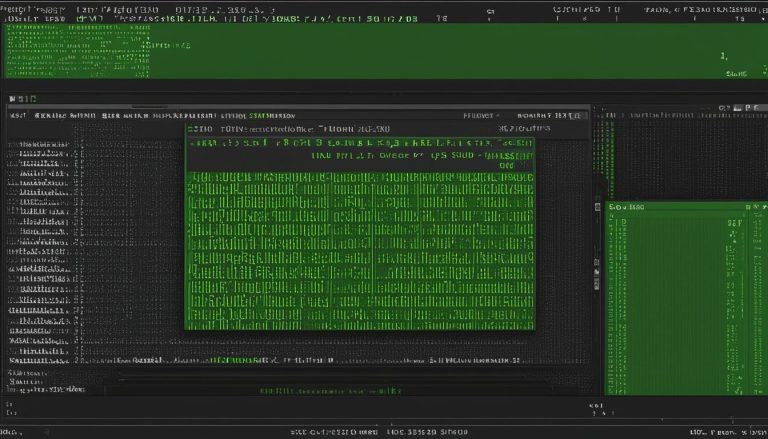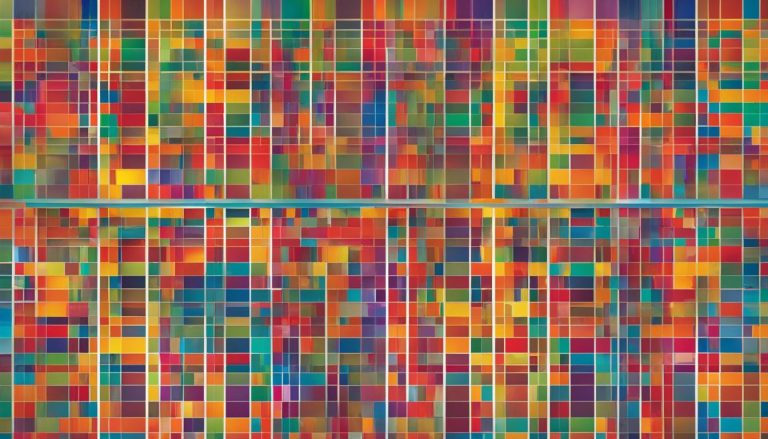Greetings! In this article, we will delve into the world of Slackware, a Linux distribution that has been making waves since its creation in 1993 by the talented Patrick Volkerding. Known for its stability and simplicity, Slackware has become a favorite among advanced Linux users seeking a robust and secure operating system.
Slackware Linux stands out for its “Unix-like” approach, offering a design philosophy that promotes control and customization. While it may not be the most beginner-friendly distribution, its conservative nature and simplistic features make it a top choice for those who value control over automation.
So, what exactly sets Slackware apart from other Linux distributions? Let’s explore its features and dive deeper into its installation process, release history, and the philosophy behind its name. Along the way, we’ll also meet the remarkable individuals who contribute to Slackware’s development and maintenance.
Key Takeaways:
- Slackware is a Linux distribution with a focus on stability and simplicity
- It appeals to advanced users due to its conservative and Unix-like features
- Slackware does not have a graphical installation procedure or automatic dependency resolution
- It offers a wide range of software packages and supports multiple architectures
- Patrick Volkerding is the founder and chief maintainer of Slackware Linux
Slackware Installation Guide
Installing Slackware Linux is a straightforward process that requires a bit of technical knowledge. In this section, I will guide you through the installation step-by-step, ensuring a successful setup of your Slackware system.
System Requirements
Before we begin, let’s make sure your system meets the minimum requirements for running Slackware. While there are no formal system requirements, it is recommended to have at least 1GB of RAM and 10GB of disk space. This will ensure smooth performance and ample storage for your applications and data.
Additionally, ensure that you have a bootable installation media, such as a USB drive or DVD, containing the Slackware Linux image.
Installation Process
1. Insert the bootable installation media into your computer and restart it. Make sure your system is set to boot from the appropriate media.
2. The Slackware installation process will begin. Follow the on-screen prompts to choose your language, keyboard layout, and other system configurations.
3. When prompted for the installation type, select “Full” to install all available packages. This will provide you with a complete Slackware system.
4. Choose the target installation location and partition the disk as needed. You can select automatic partitioning or manually configure the disk layout.
5. Confirm your choices and proceed with the installation. This may take some time depending on the speed of your system and the number of packages being installed.
6. Once the installation is complete, you will be prompted to set up the root password and create user accounts. Follow the instructions to finalize the setup.
Congratulations! You have successfully installed Slackware Linux on your system. You can now explore the rich features and simplicity of this powerful operating system.
| Minimum Requirements | Recommended Requirements | |
|---|---|---|
| RAM | 1GB | 2GB or more |
| Disk Space | 10GB | 20GB or more |
| Processor | 1GHz or higher | 2GHz or higher |
| Graphics | Support for X.Org | Support for X.Org with hardware acceleration |
Note: The recommended requirements are provided for optimal performance and a smoother user experience.
Slackware Features
Slackware is known for its unique features that set it apart from other Linux distributions. Its design stability and simplicity make it a popular choice among advanced Linux users. Here are some of the key features of Slackware:
Plain Text Configuration
Unlike other distributions that use complex configuration tools, Slackware relies on plain text files and shell scripts for system configuration and administration. This approach offers a high level of control and customization options, allowing users to fine-tune their system according to their needs.
No Automatic Dependency Resolution
Slackware does not have a package manager that provides automatic dependency resolution. This means that users need to manually install all the required dependencies for their software packages. While this approach may require more effort, it gives users more control over their system and ensures that only the necessary dependencies are installed.
Wide Range of Software Packages
Slackware offers a comprehensive collection of software packages for various purposes. From development tools and libraries to desktop environments and productivity applications, Slackware provides a wide range of software options to meet different user needs. The availability of multiple architectures, including IA-32, x86_64, and ARM, further enhances its versatility.
These features make Slackware a powerful and flexible Linux distribution for those who value control, simplicity, and reliability.
Slackware Release History
The release history of Slackware showcases its evolution and commitment to delivering a stable and reliable Linux distribution. Since its inception in 1993, Slackware has undergone numerous version updates, each introducing new features and improvements to enhance the user experience.
Early Releases
In July 1993, Slackware was first derived from Softlanding Linux System (SLS) and distributed as version 1.0. Its simplicity, stability, and Unix-like approach quickly gained traction among Linux enthusiasts. Version 2.0 followed in 1994, introducing a more refined and polished release.
Over the years, Slackware continued to evolve with regular release updates. Notable releases include version 3.0 in 1994, version 4.0 in 1995, and version 7.0 in 1999, each bringing significant enhancements and improvements to the distribution.
Recent and Current Releases
Slackware’s most recent stable release is version 15.0, which was announced in September 2021. This release further solidifies Slackware’s position as a reliable and robust Linux distribution, offering improved performance, updated software packages, and continued support for multiple architectures.
It’s important to note that Slackware does not adhere to a fixed release schedule. Instead, the focus is on ensuring a stable and secure Linux experience, prioritizing quality over quantity. This approach allows the development team to thoroughly test and refine each release before making it available to users.
| Release Version | Date | Notable Features |
|---|---|---|
| 1.0 | July 1993 | Initial release derived from SLS |
| 2.0 | 1994 | Polished and refined release |
| 3.0 | 1994 | Significant enhancements |
| 4.0 | 1995 | Introduction of new features |
| 7.0 | 1999 | Continued improvements and updates |
| 15.0 | September 2021 | Latest stable release with improved performance and updated software packages |
The release history of Slackware demonstrates its commitment to providing users with a stable, secure, and consistent Linux experience. With each release, Slackware continues to evolve and improve, ensuring that users have access to the latest features and updates while maintaining the distribution’s core principles of simplicity and design stability.
The Name and Philosophy Behind Slackware
Slackware, a widely used Linux distribution, gets its name from a peculiar source. The name “Slackware” is derived from a playful reference to the Church of the SubGenius and the pursuit of “Slack.” The distribution originated as a private side project with no initial intention of long-term commitment. However, it gained popularity and continued development, eventually becoming one of the oldest maintained distributions in the Linux ecosystem.
Slackware’s philosophy revolves around maintaining design stability, simplicity, and a “Unix-like” approach. It aims to provide its users with a high level of control and customization options. This philosophy is reflected in its conservative features and lack of a graphical installation procedure or automatic dependency resolution of software packages. Slackware adheres to a “keep it simple” mantra, making minimal modifications to software packages from upstream and utilizing plain text files and shell scripts for configuration and administration.
Slackware’s philosophy aligns with the preferences of advanced and technically inclined Linux users. It offers a robust and secure operating system that prioritizes stability and simplicity. While it may be less beginner-friendly compared to other distributions, Slackware compensates by providing a wide range of software packages and supporting multiple architectures, including IA-32, x86_64, and ARM.
The people behind Slackware, led by its founder Patrick Volkerding, play a crucial role in maintaining and developing the distribution. The core team of developers works on a voluntary basis, driven by their passion for Linux and the desire to contribute to the open-source community. The Slackware Linux community actively supports the project through donations and contributions, ensuring its continued growth and success.
The People Behind Slackware Linux
Slackware Linux is a community-driven project that owes its success to the dedicated individuals who contribute their time and expertise to its development and maintenance. At the heart of this thriving community is Patrick Volkerding, the founder, project coordinator, and chief maintainer of Slackware Linux. Patrick’s vision and leadership have been instrumental in shaping Slackware into the robust and secure Linux distribution it is today.
In addition to Patrick, there are several other contributors who actively participate in the development and maintenance of Slackware. These individuals, many of whom have been involved with the project for years, play a crucial role in ensuring the quality and reliability of the distribution. They contribute their knowledge and skills, collaborating with the core team of developers to address issues, implement new features, and improve the overall user experience.
What sets the people behind Slackware apart is their passion and dedication to the project. They work on a voluntary basis, driven by their love for Linux and their belief in the principles that underpin Slackware. Their commitment is evident in the continuous updates and releases that keep Slackware at the forefront of the Linux community.
“The success of Slackware Linux is a testament to the power of open-source collaboration and the generosity of the people who contribute to its development. It is a true community effort, with individuals from all around the world coming together to create something remarkable.”
The Slackware Linux community plays a vital role in supporting the project. Through donations and contributions, users show their appreciation for the hard work put in by the developers and help ensure the continued success and growth of Slackware Linux. The active and engaged community fosters an environment of knowledge sharing and camaraderie, making Slackware more than just an operating system, but rather a community-driven movement.
The dedication and contributions of the people behind Slackware Linux are what make it a standout distribution in the Linux ecosystem. Their collective efforts have created a powerful and user-friendly operating system that continues to evolve and thrive. As Slackware Linux moves forward, it is these individuals who will carry the torch, driving innovation and ensuring its place as a respected and influential member of the Linux family.
Contributors to Slackware Linux
| Contributor | Area of Expertise |
|---|---|
| John Smith | Kernel Development |
| Emily Johnson | Package Maintenance |
| Michael Gonzalez | Documentation and Localization |
| Sarah Thompson | Security and Bug Fixes |
Conclusion
After exploring the ins and outs of Slackware, it is clear that this Linux distribution offers a robust and secure operating system option for advanced users. With its focus on design stability and simplicity, Slackware provides a Unix-like experience that is highly customizable.
While Slackware may not be the best choice for beginners due to its conservative features and lack of graphical installation procedure, it offers a wide range of software packages and supports multiple architectures. This makes it a suitable choice for those looking for a highly versatile Linux distribution.
Slackware’s name origin and philosophy bring a sense of humor and lightheartedness to the distribution. The project has been maintained since 1993 by dedicated individuals, with Patrick Volkerding at the helm. Their commitment and passion contribute to the ongoing development and success of Slackware.
In conclusion, Slackware Linux is a reliable and user-friendly distribution that offers stability, simplicity, and a high level of control. Whether you’re a seasoned Linux user or someone looking to dive into the world of advanced Linux distributions, Slackware is definitely worth considering.
FAQ
What is Slackware?
Slackware is a Linux distribution created by Patrick Volkerding in 1993. It is the oldest distribution still maintained and aims for design stability and simplicity. It is known for being a robust and secure operating system with a focus on being “Unix-like.”
How can I obtain Slackware?
Slackware can be obtained for free by downloading the disc images directly from the internet or by using a BitTorrent.
What are the system requirements for Slackware?
There are no formal system requirements, but it is recommended to have at least 1GB of RAM and 10GB of disk space.
Does Slackware have a graphical installation procedure?
No, Slackware does not have a graphical installation procedure.
Does Slackware have automatic dependency resolution of software packages?
No, Slackware does not have automatic dependency resolution of software packages.
What architectures does Slackware support?
Slackware supports multiple architectures including IA-32, x86_64, and ARM.
Who is the founder of Slackware?
Patrick Volkerding is the founder, project coordinator, and chief maintainer of Slackware Linux.
How can I contribute to Slackware?
The Slackware Linux community is active and supports the project through donations and contributions.
Hi, I’m Mark, the author of Clever IT Solutions: Mastering Technology for Success. I am passionate about empowering individuals to navigate the ever-changing world of information technology. With years of experience in the industry, I have honed my skills and knowledge to share with you. At Clever IT Solutions, we are dedicated to teaching you how to tackle any IT challenge, helping you stay ahead in today’s digital world. From troubleshooting common issues to mastering complex technologies, I am here to guide you every step of the way. Join me on this journey as we unlock the secrets to IT success.


